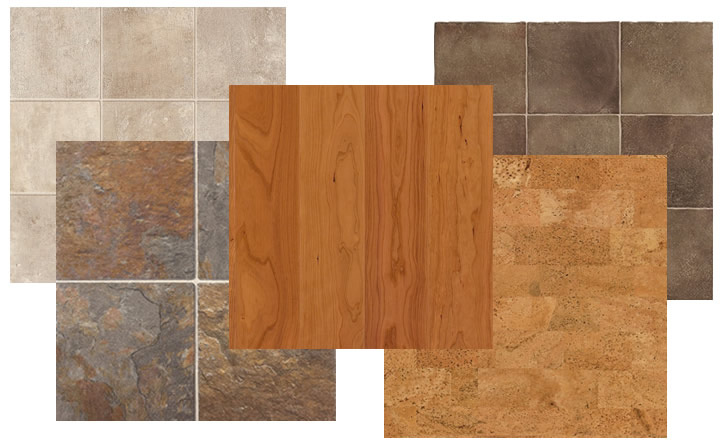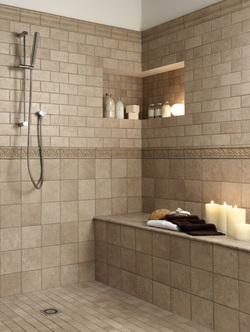How one handles improving their home can say a lot about how they handle a lot of situations. An endeavor that focuses on creativity and attention to detail is what makes home improvement so popular. That can sound intimidating to a new improver, which is why they should read the list of tips below.
Granite
When renovating your kitchen, avoid tiled counters. Tiled countertops are less sanitary than granite or mock-stone countertops, because food and other contaminants can build up in the spaces between the tiles. Tile countertops can also crack or even shatter if a heavy dish is dropped onto them, unlike countertops made of more modern materials.
If you're improving the look and feel of your kitchen by installing a granite countertop, consider individual tiles instead of a single piece slab. Granite slabs of countertop length can cost up to $5000, and sometimes even more. Instead, install foot-long granite tiles. For the same amount of space, installing granite tiles will only cost you a few hundred dollars.
Replace counter tops in your bathroom and kitchen with new marble or granite tops. Over time, counters will wear down especially if they are made of laminate. Older homes can have outdated or vintage counters. By replacing the counters you will improve the eye appeal and home value without spending a great deal of cash.
Granite
When renovating your kitchen, avoid tiled counters. Tiled countertops are less sanitary than granite or mock-stone countertops, because food and other contaminants can build up in the spaces between the tiles. Tile countertops can also crack or even shatter if a heavy dish is dropped onto them, unlike countertops made of more modern materials.
If you're improving the look and feel of your kitchen by installing a granite countertop, consider individual tiles instead of a single piece slab. Granite slabs of countertop length can cost up to $5000, and sometimes even more. Instead, install foot-long granite tiles. For the same amount of space, installing granite tiles will only cost you a few hundred dollars.
Replace counter tops in your bathroom and kitchen with new marble or granite tops. Over time, counters will wear down especially if they are made of laminate. Older homes can have outdated or vintage counters. By replacing the counters you will improve the eye appeal and home value without spending a great deal of cash.
FLOORING
When trying to fix up a house to flip it, pay attention to the kitchen. If has linoleum floors, replace them with tile. It makes the place look much better. You should examine the counters and look at replacing them. They don't have to be granite, but granite counter tops increase the value of the home and up your chances of selling it.
Invest in tile flooring. The floor is something that most people notice when they are in your home, so if you want to catch their attention, use tile. Granite, ceramic or slate tiles are both attractive and durable and come in a number of different styles and finishes. Another plus is that they are much easier to clean than carpet.
Before you get started on any project, you need to first understand what you're getting into. Going into a project without knowing everything will result in a half-finished set of cabinets and granite tiles without any grout in the seams. Go through the project first and work up a blueprint before you start on it. Home improvement really is a creative endeavor, but that does not mean it is only for professional or serious do-it-yourselfers. This creative endeavor can be enjoyed by anyone of any improvement skill level. These tips were constructed to help those of all levels find their way into home improvement.
For more home improvement ideas, check out the following articels:
When trying to fix up a house to flip it, pay attention to the kitchen. If has linoleum floors, replace them with tile. It makes the place look much better. You should examine the counters and look at replacing them. They don't have to be granite, but granite counter tops increase the value of the home and up your chances of selling it.
Invest in tile flooring. The floor is something that most people notice when they are in your home, so if you want to catch their attention, use tile. Granite, ceramic or slate tiles are both attractive and durable and come in a number of different styles and finishes. Another plus is that they are much easier to clean than carpet.
Before you get started on any project, you need to first understand what you're getting into. Going into a project without knowing everything will result in a half-finished set of cabinets and granite tiles without any grout in the seams. Go through the project first and work up a blueprint before you start on it. Home improvement really is a creative endeavor, but that does not mean it is only for professional or serious do-it-yourselfers. This creative endeavor can be enjoyed by anyone of any improvement skill level. These tips were constructed to help those of all levels find their way into home improvement.
For more home improvement ideas, check out the following articels:


 RSS Feed
RSS Feed